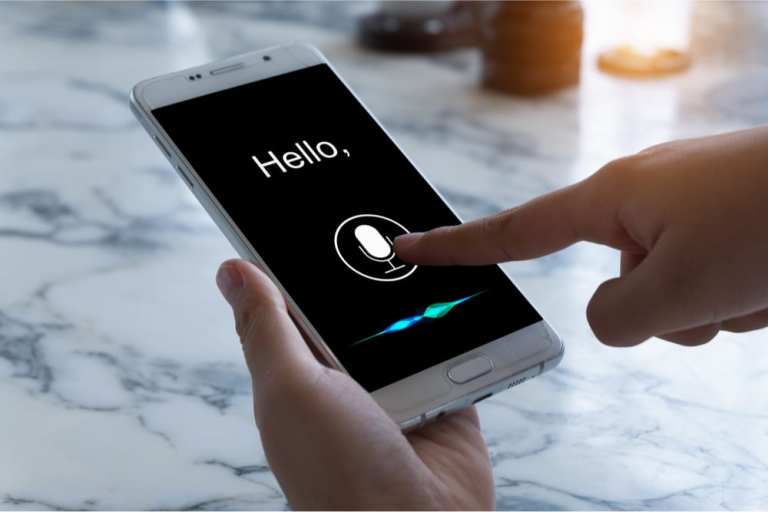Voice technology is among the things that have gotten a big boost from the global pandemic as consumers shift to buying things online and avoiding touching items in public places for fear of contracting COVID-19.
“We’ve seen a huge increase in the use of voice in the home,” Tom Taylor, senior vice president of Amazon’s Alexa unit, told GeekWire in a recent interview. “People do build relationships with Alexa. We have something like 1 million marriage proposals and compliments of love to Alexa. I don’t think anybody has ever done that to a keyboard.”
Voice technology’s adoption was already on the rise in the pre-pandemic period, as PYMNTS’ and Visa’s How We Will Pay report demonstrated in late 2019. Our study found that about 3 in 10 consumers owned voice assistants compared to just 1.4 out of 10 in 2017. Consumers who made purchases via their smart speakers also rose to 9.6 percent of all consumers as of late 2018 vs. just 7.7 percent a year earlier.
And all of that was before the pandemic made voice assistants even more valuable as their use cases expanded to meet new consumer needs. They’re now showing up in hotel rooms, enabling grocery shopping and beginning to sneak into quick-service restaurants (QSRs) as an enhancement to all those touchscreens that have been going up in recent years. Here are five changes the industry is seeing as these devices come into greater use:
Voice-Tech And Education
Education has been on a wild ride for the past several months, and voice assistants are becoming part of an increasingly integrated hybridized educational model of online and in-person learning, according to recent reports.
Advertisement: Scroll to Continue
Google Assistant and Alexa-enabled devices had increasingly been making classroom appearances prior to the pandemic as supplemental educational tools for teachers. But now, their use has reportedly expanded to becoming tools for contacting students, sending out information and assignments and even sending parents custom shopping lists with the equipment and tools necessary for home-based learning.
Improving Devices’ eCommerce Abilities
Amazon has for the past year been developing Alexa Conversations, an enhancement designed to fuse various Alexa skills together into a single distinct user experience.
Amazon Alexa VP Prem Natarajan recently told VentureBeat that will make it possible to buy tickets, make dinner reservations and arrange Uber travel in a single interaction with Alexa instead of having to muddle through multiple ones.
He said smoothing out the voice-commerce experience so customers can make arrangements organically instead of through a series of distinct conversations with their assistants makes the process both more desirable and friction free.
Beefed Up Display Screens
Google Director of Product Barak Turovsky told VentureBeat that for voice technology to really make it to the next level will require a “multimodal” experience that combines input from text, photos or video via screen.
He said voice alone has limits in surfacing the data that the user wants. Without a screen, there’s no infinite scroll or first page of Google search results, so responses are limited to perhaps three potential results at most, Turovsky said. That often means a voice assistant can miss what the user is looking for.
Published reports say such concerns have pushed both Amazon and Google to increase their smart-display design efforts, emphasizing artificial intelligence (AI) assistants that can both share visual content and respond with voice.
A Consolidating Field Of Competitors
While Amazon and Google are expanding their offerings, the field of competitors could be growing smaller.
For example, Bixby — Samsung’s entrant into the great virtual voice assistant race — might be disappearing as part of a possible deal between the smartphone maker and Google.
The deal would see Bixby signing off, with Samsung promoting Google’s search site, Google Assistant and Google Play Store apps instead, according to Reuters. If that happens, Google will in one fell swoop get the maker of the world’s bestselling mobile devices into the Android ecosystem.
Samsung has maintained its independence and consistently made efforts to promote its own apps, but Bixby has always at best been a glitchy product that captured limited user interest. And now the pandemic has cooled sales, prompting Samsung to consider giving up on costly development projects like Bixby in search of more profitable prospects.
In a statement, Samsung said that while it is committed to its own services, it “closely works with Google and other partners to offer the best mobile experiences.”
A Big Alexa Upgrade
Coming soon to a smartphone near you — a revamped Amazon Alexa that will include a customized home screen based on what each individual user does the most with the app.
The upgrade, scheduled for the end of August, aims to increase simplicity, as a frequent complaint about the current Alexa app is its random and superfluous prompts from the home screen, CNBC reported. Users also dislike friction-filled sifting through various menus to access some settings.
However, the planned update promises to put users’ most-used features at the easiest place to access. That means someone who primarily uses Spotify will have a different home screen from someone who uses an Audible book system or a shopping list.
Additionally, the button to open Alexa will now be located at the top of the screen as opposed to the bottom. The upgrade will also reportedly relocate reminders, routines, skills, settings and other features to easier-to-find places on the screen.
The Bottom Line
Will the upgrades boost Alexa’s popularity and make it a stronger competitor to phones that already come with Apple Siri or the Google Assistant preinstalled? Only time will tell — and consumer preference will decide.
However, the race for voice-technology domination is clearly on, as consumers have opened their minds to the idea of shopping with a voice assistant. Providers are responding by rushing to bring them the rest of the way along on that journey.




